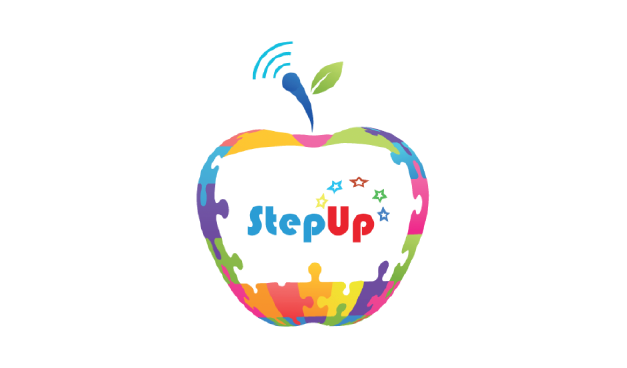Read the next two selections. Then choose the best answer to each question.
Scientist Exploring the Crust of the Earth
The Movement of the Earth’s Crust
by Anonymous
2 The crust can be thought of as a mixture of solid and liquid, like crackers floating on a bowl of hot soup. The soup (the lava) is gently stirred by currents below. The crackers (the plates) move slowly and gently, but there’s friction where two plates push against each other. When one suddenly gives way, a big change occurs.
3 Scientists who have studied the movement of these plates have come to these conclusions:
4 One plate may slide under the other. This may cause a volcanic eruption. An example of this can be found in the Northwestern U.S., where a line of volcanoes stretches from California to Canada.
5 Plates can pull away from each other. Then magma wells up in between. Magma is lava that’s still under the ground. The built-up magma creates a ridge. An example of this is occurring under the Atlantic Ocean, where the seafloor is expanding as molten rock pushes up, and it’s widening the distance between America and Europe by about 3 inches each year!
6 Plates can push against each other, going in opposite directions. One can move north and one south, or one east and one west. A split occurs between the two, called a fault. This allows the two plates to move in opposite directions. An example of this is the San Andreas Fault in California.
7 Two plates may crash directly into each other. This causes each to buckle up and creates mountain ranges. An example of this is the Himalaya mountain range, where the plate carrying India crashed into the plate carrying Asia.
8 So, although we cannot feel or see the movement of tectonic plates, we can see the results.
9 And, we can conclude that these tiny movements cause many great changes.
What Makes Up the Earth’s Crust
by Agnes Giberne
1 People tend to think of land and water on the earth as if they were fixed in one changeless form. As if every continent and every island were of exactly the same shape and size now that it always has been and always will be.
2 Yet, nothing can be further from the truth. The earth’s crust is a scene of constant change, struggle, building up, and wearing away.
3 The work may go on slowly, but it does go on. The sea is always fighting against the land, beating down her cliffs, eating into her shores, swallowing bit by bit of solid earth. Rain and frost and streams are always busily at work. They help the ocean in her work of destruction. Year by year and century by century, it continues. Not one country in the world, which is bordered by the sea, has the same coastline that it had one hundred years ago. Every land loses a part of its material every century. It is washed away, bit by bit, into the ocean.
4 Is this hard to believe? Look at the crumbling cliffs around old England's shores. See the effect upon the beach of one night's fierce storm. Mark the pathway on the cliff, how it seems to have crept so near the edge that here and there it is scarcely safe to walk upon. Very soon, such a path will become impassable. Just from a mere accident, of course,—the breaking away of some of the earth, loosened by rain and frost and wind. But, this is an accident that happens daily in hundreds of places around the world.
5 Leaving the ocean, look now at the river near your own neighborhood. See the slight muddiness which seems to color its waters. Why is that? Only a little earth and sand were carried off from the banks as it flowed. It is very unimportant and small in quantity, doubtless, just at this moment, and just at this spot. But what of that little going on week after week, and century after century, throughout the whole course of the river, and throughout the whole course of every river in our whole country and in every other country. A vast amount of material must every year be torn from the land and given to the ocean. And the land's loss here is the ocean's gain.
Scientist Exploring the Earth’s Crust Opinion Task
You will now review your notes and sources, and plan, draft, revise, and edit your writing. You may use your notes and go back to the sources. Now read your assignment and the information about how your writing will be scored; then begin your work.
Your Assignment:
When your class returns from the library, your classmates begin to share what they have learned about the effects of the movement of the Earth’s crust. They also begin to discuss the new city ordinance, or rule, that requires old Christmas trees be brought to the beach when Christmas is over so they can be used to slow down the erosion. Some students agree with the rule. Your teacher asks you to write a paper explaining your opinion on the new rule.
In your paper, you will take a side as to whether you agree with the rule requiring the used Christmas trees to be brought to the beach to slow erosion, or whether you disagree. Your paper will be read by your teacher and your classmates. Make sure you clearly state your opinion and write several paragraphs supporting your opinion with reasons and details from the sources. Develop your ideas clearly and use your own words, except when quoting directly from the sources. Be sure to give the source title or number for the details or facts you use.
REMEMBER: A well-written opinion paper
- Has a clear opinion
- Is well-organized and stays on the topic
- Has an introduction and conclusion
- Uses transitions
- Uses details or facts from the sources to support your opinion
- Puts information from the sources in your own words, except when using direct quotations from the sources
- Gives the title or number of the source for the details or facts you included
- Develops ideas clearly
- Follows rules of writing (spelling, punctuation, and grammar usage)
Now, begin your work on your opinion paper. Manage your time carefully so that you can
- Plan your opinion paper
- Write your opinion paper.
- Revise and edit the final draft of your opinion paper.
Word-processing tools and spell check are available to you.
You are being asked to write an opinion paper that is several paragraphs long. Type your response in the box below. The box will get bigger as you type.
Remember to check your notes and your prewriting/planning as you write and then revise and edit your opinion paper.
 Online Program
Online Program Writing Standards (W.5.1)
Writing Standards (W.5.1)  Incomplete Answer
Incomplete Answer